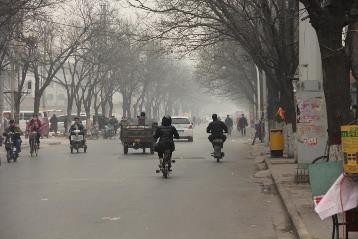Something positive has come out of the red alert warning issued by the Beijing government, some environmental experts said on Wednesday, Dec. 9, China Daily reported.
Since the red alert was sounded on Tuesday morning, the concentration of PM2.5 in Beijing was cut down by 10 percent, according to Cheng Shuiyuan, head of the College of Environmental and Energy Engineering at Beijing University of Technology.
The information was the outcome of a simulation experiment done by his team to assess the effects of the local government's emergency response plans, which were implemented once the red level warning was issued.
Meanwhile, the China Research Academy of Environmental Sciences also conducted a real-time analysis on the cause of air pollutants in the area. Based on their research, it was revealed that the amount of nitrates in the atmosphere was halved on Tuesday.
According to Chai Fahe, the deputy head of the academy, the decrease of nitrates, which come from vehicle exhaust, was the result of the odd-even scheme placed on vehicles when the red alert warning was issued. Furthermore, efforts on reducing coal consumption contributed to reduce carbon emissions.
The suspension of approximately 2,100 industrial operations and 3,500 construction work also helped.
Wang Zifa, a researcher from the Institute of Atmospheric Physics at the Chinese Academy of Sciences, agreed that emergency measures greatly helped in cutting down pollution.
The highest reading for PM2.5 particles in Beijing was 233 on Wednesday afternoon. The red alert warning in Beijing is expected to be lifted on Thursday, Dec. 10, when the smog is predicted to be dispersed by the cold front.



























